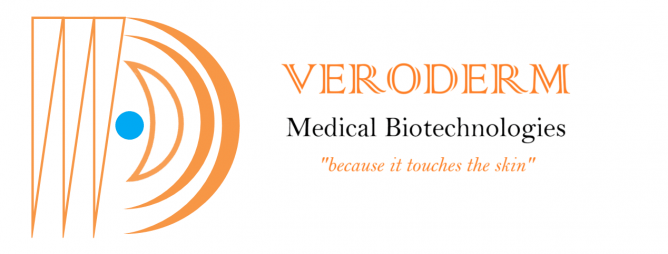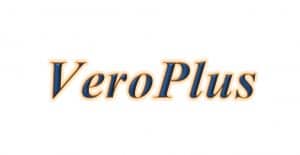The First Emollient Hydrogel for Wounds & Ulcers
A formulation with a multifunctional hydrogel that provides moisture, antimicrobial protection, and biofilm control, and promotes healing with minimal scarring.
Easy-to-apply emollient hydrogel for direct contact on acute ~ chronic wounds ~ ulcers ~ stuck chronic wounds & ulcers, for :
- Advanced cellular stimulation
- Tissue moisturizing & soothing properties
- Expedited Wound healing response
- Maximum protection against local infections
For use by patients and medical practitioners | DESIGNED FOR ALL AGES
General View:
VeroPlus is an innovative tissue and skin direct contact hydrogel designed to be applied safely on open tissues of chronic, stuck wounds and ulcers to
- Perfect antimicrobial long-acting effect
- Stimulate cellular healing response and remove healing burdens including biofilms
- Control hydration of wound environment
- Expedite healthy granulation and boost wound response
- Prevents tissue mechanical stretch tearing effects of newly formed tissues
- Maintains a healthy cellular microenvironment.
- Aid faster healing and avoid delayed healing
Recommended Usage:
- Safe to apply on open wounds/ ulcers & wound/ ulcers bed.
- Apply VeroPlus on stuck chronic wounds and ulcers.
Directions of Use:
- With clean manual/ syringe needle-free application
- Apply directly on the open wound area and the wound bed to be covered. Sustain min of 2mm gel thickness.
- Cover the wound with a protective dressing. Preferably nonabsorbent film dressing.
- In case of absorbing dressing, apply VeroPlus on the dressing on the area facing the open wound area.
Contraindications:
None were observed/ reported.
Storage:
- Keep covered at all times.
- Store at ambient (room) temperature.
- Avoid high or very low temperatures.
- Avoid direct sunlight or UV sources
Autolytic debridement is a natural process where the body uses its own enzymes and moisture to break down and liquefy necrotic (dead) tissue in a wound. This type of debridement is often considered the most selective and least invasive method because it targets only the dead tissue without harming healthy tissue.
How Autolytic Debridement Works:
- Moist Environment**: A moist wound environment is crucial for autolytic debridement. The moisture helps to soften and liquefy necrotic tissue, making it easier for the body’s enzymes to break it down.
- Enzymatic Action**: The body’s natural enzymes, such as collagenase and other proteolytic enzymes, are secreted by white blood cells and other cells in the wound bed. These enzymes help to digest and remove dead tissue.
- Removal of Dead Tissue**: The liquefied necrotic tissue is gradually removed by the body’s immune cells and through the wound exudate (a fluid that oozes out of wounds). This process helps to clean the wound and promote the growth of new, healthy tissue.
Advantages of Autolytic Debridement:
– Selective: Targets only necrotic tissue, preserving healthy tissue.
– Painless: Generally less painful compared to other debridement methods.
– Non-invasive: Does not require surgical intervention or mechanical methods.
Disadvantages of Autolytic Debridement:
– Slow Process: It can take longer compared to other debridement methods, which might be a drawback for large or heavily necrotic wounds but is a plus to avoid heavy necrosis in wounds.
– Infection Risk: Requires careful monitoring for signs of infection, as the moist environment can potentially foster bacterial growth if not managed properly. However, with VeroPlus we have addressed this important issue and VeroPlus does not allow clinical wound bacterial infections.
Suitable Wounds for Autolytic Debridement:
– Minor to Moderate Necrosis: Effective for wounds with a manageable amount of dead tissue.
– Pressure Ulcers: Often used in the management of pressure ulcers.
– Leg Ulcers: Commonly applied in the treatment of venous and arterial leg ulcers.
Dressings Used for Autolytic Debridement:
- Hydrocolloid Dressings:
– Form a gel when they come into contact with wound exudate.
– Maintain a moist environment conducive to autolytic debridement.
- Hydrogel Dressings: VeroPlus
– Provide moisture to dry wounds and aid in the autolytic process.
– Help to soften and liquefy necrotic tissue.
- Transparent Film Dressings:
– Allow for monitoring of the wound while maintaining moisture.
– Used for wounds with minimal exudate.
- Alginate Dressings:
– Derived from seaweed and form a gel upon contact with wound fluid.
– Suitable for wounds with moderate to heavy exudate.
Application and Monitoring:
– Cleaning: Clean the wound with saline or a mild cleanser before applying the dressing.
– Dressing Application: Apply the appropriate dressing to maintain a moist environment.
– Monitoring: Regularly monitor the wound for signs of infection and progress of debridement. Change the dressing as needed based on the amount of exudate and manufacturer’s guidelines.
– Infection Control: Be vigilant for signs of infection, such as increased redness, swelling, warmth, pain, or purulent discharge. If infection is suspected, consult a healthcare professional promptly.
Autolytic debridement is an effective and gentle method for managing necrotic tissue in wounds, promoting a cleaner wound bed and supporting the body’s natural healing processes.
Creating an emollient hydrogel that effectively promotes autolytic debridement, controls biofilms, and supports wound healing with minimal scarring is a complex task that involves combining ingredients with specific properties. Here’s a potential formulation and the rationale behind each component:
Key Components and Roles
- Hydrogel Base**:
– Provides the gel structure and maintains a moist environment essential for autolytic debridement.
– Acts as the primary solvent and hydrates the hydrogel.
- Emollients:
– Hydrates and soothes the skin, maintaining moisture and preventing dryness.
– Provides additional hydration, soothing effects, and promotes healing.
- Antimicrobial Agents:
– Offers broad-spectrum antimicrobial activity, promotes autolytic debridement and supports wound healing.
– Provides strong antimicrobial action against a wide range of pathogens and helps prevent biofilm formation.
- Biofilm Control Agents:
– Helps in disrupting biofilms and enhances the activity of antimicrobial agents.
- Healing Agents:
– Promotes healing, reduces inflammation, and minimizes scarring.
– Known for its wound-healing properties and ability to promote collagen synthesis, reducing scar formation.
- Optional Additives:
– Provide additional antimicrobial and anti-inflammatory properties. Ensure they are used in low concentrations to avoid irritation.
For more information please contact info@veroderm.com

